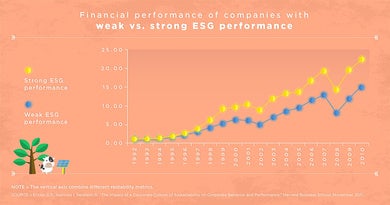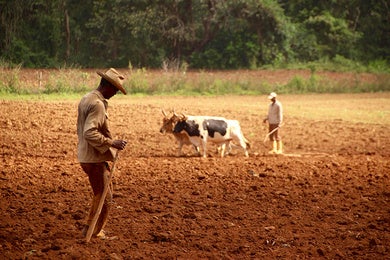
Unity is strength
The irruption of new players in the global commodities trade, greater consolidation of the multinationals, and the effects of climate change are forcing agricultural producers in Latin America and the Caribbean to rethink their strategies for minimizing risks and maximizing results on a sustainable basis. Realities and opportunities Although the research and development (R&D) investments of the “Big Four” (Bayer-Monsanto, ChemChina-Syngenta, Dow-Dupont, and BASF) achieved scientific advances that transformed global agriculture, expanded the agricultural frontier, and increased yields, producers face a dependence on technology and prices that is difficult to mitigate. Although in grains, companies like China’s COFCO or Japan’s Marubeni challenge the power of the ABCD (ADM, Bunge, Cargill, and Dreyfus), and demonstrate the strategic importance of ensuring the supply of commodities for some countries. In this fight, it is likely that corporate acquisitions will continue, or that new commodities platforms will be developed, creating opportunities for groups of producers, cooperatives, or business associations. Finally, the effects of climate change (rains, droughts, frosts, floods, cyclones, reduced aquifer flows, and new diseases) are affecting the producers’ profits, particularly in Central America where the narrow strip of land between two oceans makes climatic distortions even worse. Various ways to partner It is an historic reality that agricultural producers take the greatest risks but capture the smallest piece of the pie because of their fragmentation, difficulties in accessing financing, and minimum added value. However, producer partners in cooperatives that adapted to the dynamics of the market, through internal transformations (including advances in the management of corporate governance), were able not only to improve their incomes, but also to become part of a sustainable business, like Copersucar in Brazil, Conaprole in Uruguay, ACA in Argentina, FNC in Colombia, Colonias Unidas in Paraguay, or Dos Pinos in Costa Rica. In the case of independent larger-scale producers, although they will be able to maintain a certain individualistic profile internally to obtain efficiency and productivity, improving the external profitability is a must. They could take their inspiration from the spirit of cooperatives to create partnerships leveraging their combined volume (with increasing strategic value) and obtaining better conditions, or even process it for greater added value. For example, in Argentina, the 30 partnered producers of Bio4 transform their own and third-party corn to produce ethanol, and the “L” Group partners to sell milk. Similarly, in Mexico, the partnered producers of Proaoass and Gradesa export bread wheat or durum wheat. Although the greatest challenge for farmers under this model was to remain united, and in some cases to delegate the management of the new business to third-party professionals, they were also focused on obtaining better economic results, and also to develop a platform to start new businesses and obtain market intelligence. Looking ahead It is likely that differences in results among producers of a similar scale are due to: (1) more collective than individual actions; (2) a more business-like profile for sustainable production; and (3) the management of individuals or teams that applied the best technology packages. Considering that quasi-state companies, and sovereign funds from Asia-Pacific and Middle East countries are seeking alternatives to ensure the food supply, soon it would not be utopic to think that networks of partnered producers or cooperatives may develop strategic alliances to have their own ports, freezers, or powdered milk plants. Moreover, since these investments require long-term financing, it would not be unrealistic to think that development banking will be financing these projects. As Seneca said: “It is not because things are difficult that we do not dare, it is because we do not dare that things are difficult.” Subscribe to receive more content like this! [mc4wp_form]

